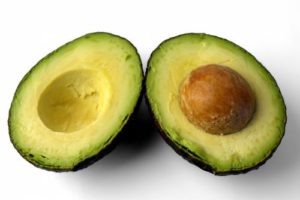by Sameera Khan, RD, PA-C, special to SportsMD.com

As an amateur boxer, Frank Riccuiti is constantly training. Boxing being a physically intense sport, he was looking to keep up with his endurance, strength, agility and speed.
Nutrition also plays an instrumental role in the success of a boxer. Since he trained year-round, and was set on making middleweight, Riccuiti wanted to stay constantly close to his fighting weight. Together we created a menu for him which consisted of:
- Small sized meals 4-5 times a day
- Cut out calories from chips and sweets
- Complex carbohydrates like oatmeal to slow down fatigue
- Added high quality protein to each meal
- Fruits high in fiber, and antioxidants for repair
- Root vegetables for brain alertness and performance
- Stick to a Paleo style diet with low glycemic index foods
- 5 ounces of water every 15 minutes he trained.
- 25-35 grams of fiber per day
- Whey, egg or hemp protein supplements

We spent 6-8 weeks before each fight in training camp, analyzing his performance in the run up to his fight, adding and eliminating foods to ensure he gives his best performance in the ring. As a boxer, Frank needed to stay within his caloric limits while increasing his low glycemic starchy carb intake.
Carbs:
- A boxers muscles need an immediate and effective source of energy
- Carbs help in releasing energy at a slower pace and replace the depleted glycogen stores. This adds stamina during training bouts.
- Brown rice, sweet potatoes, oatmeal quinoa and fruit
- 45-50% of daily calories should come from complex carbohydrates.
Protein:
- Repairs damaged muscles and tears during training and during actual fights.
- Helps to increase the growth of muscle
- Acts as an additional energy source, saving the body muscle from breaking down for energy.
- Chicken, tuna, eggs and protein supplements.
- 30-40% of daily calories should come from protein

Fat:
- Essential fatty acids (Omega-3 and Omega-6) helps keep boxers body in good shape: fish, greens, lettuce and kidney beans
- Monounsaturated fats like olives, avocados and seeds.
- 15-20% of daily calories should come from fat during weeks 1-4. During weeks 4-6 we decreased healthy fats by 10% and increased protein by the same amount
Frank needed to cut down his body fat and gain muscle at the same time. Achieving this balance was very tricky where he had to alternate his body being in energy surplus versus energy deficit, on different days of the week. While he stayed in calorie deficit during the day, he saved the extra calories to build muscle after completing his training for the day.
High Carb meal plan for Frank on training days
| Time | Meal |
| 8 am | Oatmeal made with oats, coconut milk, ground almonds and a banana mixed with raw honey |
| 11 am snack | Protein/carb drink with hemp protein, powdered flaxseed, banana, and coconut oil. |
| 1 pm | Salmon, mixed bean salad, and a baked potato |
| 3 pm snack | Muesli with fruit (goji berries and mulberries) and Greek yogurt |
| 6 pm | Pita pocket with chicken, mixed green veggies and sweet potatoes |
8-9 hours of sleep is essential for recovery
Frank’s training regimen:

Morning:
- Road work is essential to having stamina in the ring where most bouts are 10-12 rounds, lasting 3 minutes each.
- Morning stretches and yoga is followed by 5-7 mile runs each day
Afternoon:
- 1-2 hours of combined strength training includes: Weight lifting, Plyometrics and Calisthenics which gives boxers the strength, balance, agility and stamina needed for a fight.
Evening:
- 3-5 repetitions of 3 minute rounds of jump rope roughly 20 minutes total to get the heart rate up followed by 3 to 10 rounds of sparring with other boxers in the ring.
Sameera Khan, RDN PA-C, is an obesity expert dietitian and nutritionist, best-selling author, and podcast host of “ Regain Be Gone”. She is the owner of Lowkcalgal LLC, a long term weight loss concept that actually works where others have failed. She has spent two decades working with clients and their families helping them lose weight together and strengthening inter family dynamics. Sameera has authored chapters for nutrition textbooks and written articles for various obesity journals, and regularly contributes to Well+Good. She is the author of the bestseller “Regain be gone.”

